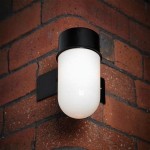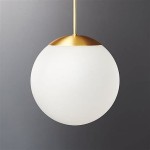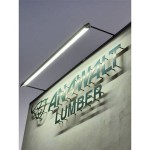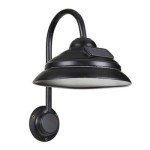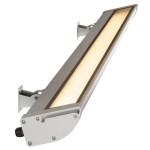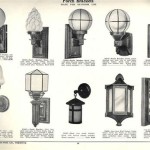How To Turn On Outdoor Lights Automatically
Automating outdoor lighting enhances security, convenience, and curb appeal. This article explores various methods for achieving automated outdoor lighting, ranging from simple timers to sophisticated smart home integrations.
1. Mechanical Timers
Mechanical timers offer a basic, cost-effective solution for automating outdoor lights. These timers plug into a standard outlet and control the power flow to the connected light fixture. Users set the desired on/off times using a dial or pins. While simple to operate, mechanical timers lack flexibility and require manual adjustments for seasonal changes in daylight hours.
It's important to select a timer rated for the wattage of the connected lights to prevent overloading and potential fire hazards. Outdoor-rated timers are essential for withstanding exposure to the elements. Consider models with multiple on/off settings for greater control over lighting schedules.
2. Digital Timers
Digital timers provide more precise control and programming options compared to mechanical timers. They typically feature a digital display and buttons for setting on/off times, as well as days of the week. Some models offer multiple on/off cycles per day, allowing for customized lighting schedules. Digital timers often include battery backup to retain settings during power outages.
Similar to mechanical timers, ensure compatibility with the wattage of the connected lights. Look for features such as astronomical clocks that automatically adjust on/off times based on sunrise and sunset, eliminating the need for manual adjustments throughout the year.
3. Photocells (Light-Sensitive Sensors)
Photocells, also known as dusk-to-dawn sensors, automatically turn lights on at dusk and off at dawn. These sensors detect ambient light levels and activate the connected lights when it becomes dark. They offer a simple, set-it-and-forget-it solution, requiring no programming or adjustments. Photocells are ideal for security lights, pathway lighting, and other applications where lights need to operate only during darkness.
Photocells are available as standalone devices that plug into outlets or as integrated components within light fixtures. When choosing a photocell, consider its sensitivity and field of view to ensure optimal performance. Avoid placing photocells near other light sources, as this can interfere with their operation.
4. Motion Sensors
Motion sensors activate lights when movement is detected within their range. This provides on-demand lighting for security and convenience, particularly for entryways, driveways, and walkways. Motion sensors conserve energy by only activating lights when needed. Many models offer adjustable sensitivity, range, and time-out settings to customize their operation.
When installing motion sensors, consider their placement to avoid false triggers from passing cars or animals. Ensure the sensor's field of view covers the desired area. Some motion sensors offer features such as daylight sensing to prevent activation during daylight hours.
5. Smart Home Systems and Smart Plugs
Smart home systems offer sophisticated automation options for outdoor lighting. Smart plugs connect to Wi-Fi and allow users to control connected lights remotely via a smartphone app. These systems often integrate with voice assistants, enabling voice control of outdoor lights. Advanced features include scheduling, geofencing (activating lights based on location), and integration with other smart home devices.
Smart home systems offer a high degree of flexibility and control over outdoor lighting. However, they require a stable Wi-Fi connection and may involve a higher initial investment compared to other automation methods.
6. Smart Light Bulbs
Smart light bulbs incorporate Wi-Fi or other wireless technologies, allowing control and automation directly from a smartphone app or through voice assistants. These bulbs offer features similar to smart plugs, including scheduling, remote control, and dimming capabilities. Smart bulbs eliminate the need for separate smart plugs or switches, simplifying installation.
When choosing smart bulbs, ensure compatibility with the existing light fixtures and the chosen smart home platform. Consider features such as color changing capabilities and adjustable color temperature for enhanced ambiance and functionality.
7. Low-Voltage Landscape Lighting Systems
Low-voltage landscape lighting systems typically include transformers, cables, and a variety of fixtures for illuminating pathways, gardens, and architectural features. These systems can be automated using timers, photocells, or smart controllers. Low-voltage systems offer greater design flexibility and are generally safer to install than standard voltage wiring.
When designing a low-voltage landscape lighting system, consider factors such as the desired lighting effect, the layout of the landscape, and the wattage of the fixtures. Proper cable placement and transformer sizing are crucial for optimal system performance.

3 Remarkably Easy Solutions For An Automatic Porch Light Timer

Turn Your Outdoor Lights On Off Automatically

Heavy Duty Mechanical Outdoor Lighting Timer Volt

Westek Outdoor Light Control Automatically Turns Lights On At Dusk Off Dawn 1pk Com

Westek Outdoor Light Control Automatically Turns Lights On At Dusk Off Dawn 1pk Com

Westek Outdoor Light Control Automatically Turns Lights On At Dusk Off Dawn 1pk Com

The Best Outdoor Light Timer It S A Must Have Home Gadgets Driven By Decor Repair

Westek Outdoor Light Control Automatically Turns Lights On At Dusk Off Dawn 1pk Com

Cubilan Solar Lights Outdoor Stainless Steel Led Landscape Lighting Powered 12 Pack B0872xygyz The Home Depot

Color Changing Solar Lights Outdoor Decorative Auto On Off Garden Temu
